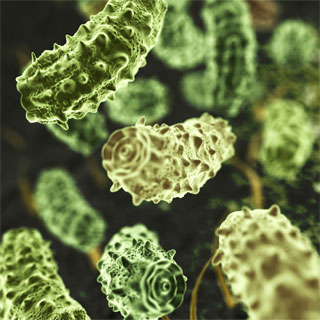Mechanism to protect against antibiotic-resistant hospital-acquired infection discovered
 London, August 22 : A key mechanism used by intestinal cells to defend themselves against one of the world''s most common hospital-acquired bacterial infections has been discovered by researchers.
London, August 22 : A key mechanism used by intestinal cells to defend themselves against one of the world''s most common hospital-acquired bacterial infections has been discovered by researchers.
According to them, the mechanism could be exploited to produce a therapy to protect against the effects of the antibiotic-resistant bacteria.
The scientists made their discovery while investigating cellular responses to two powerful toxins generated by the bacteria Clostridium difficile, which can cause symptoms ranging from diarrhoea to life-threatening bowel inflammation.
The toxins wreak havoc on cell structural proteins and biochemical communications networks, eventually killing the cell. But in order to do this damage, the toxins first have to get into the cell, and that means passing through the protective membrane that surrounds it.
It''s when Savidge and his collaborators - a multidisciplinary team of researchers from UTMB, UCLA, Case Western Reserve University, Tufts University and the Commonwealth Medical College - may have found a way to stop them.
On the molecular scale, C. difficile toxin proteins are quite large - big enough that they have to "cleave" so that a smaller piece can slip through the membrane and into the cell. This cleavage is accomplished by a built-in molecular guillotine called a cysteine protease, which activates when the toxin encounters a molecule called InsP6 that is present at much higher levels inside the cell than outside.
"It''s sort of like a sensor mechanism that detects when it''s in a cell - the toxins say, InsP6 is here, it''s time to cleave," said Savidge.
"But we''ve identified a previously unknown protective response that activates after the toxins have induced gut inflammation, in which the host uses a process called nitrosylation to shut down the cysteine protease and prevent cleavage," added Savidge.
A toxin that''s unable to cleave stays stuck in the cell membrane, incapable of attacking the cell.
Cell culture and mouse experiments demonstrated that a combination of GSNO (the nitrosylating agent and the "disarming" part of Savidge''s analogy) and InsP6 (the "premature detonation" part) worked to prevent damage from C. difficile.
The discovery has been published in Nature Medicine. (ANI)